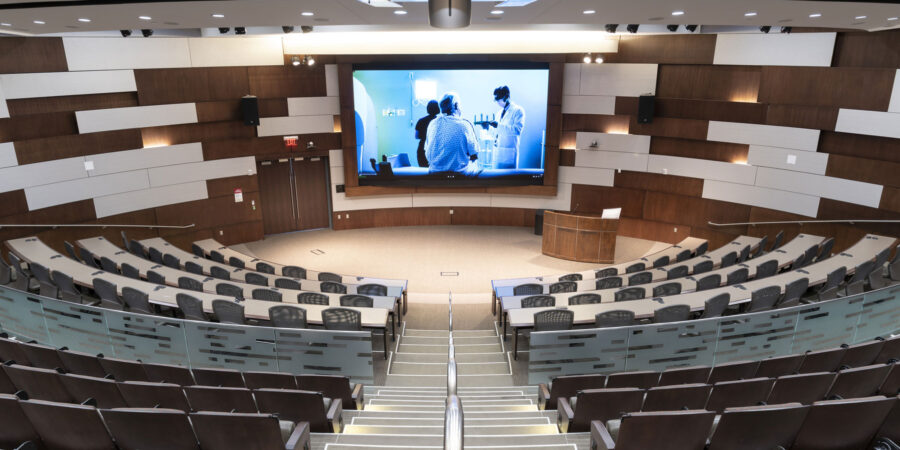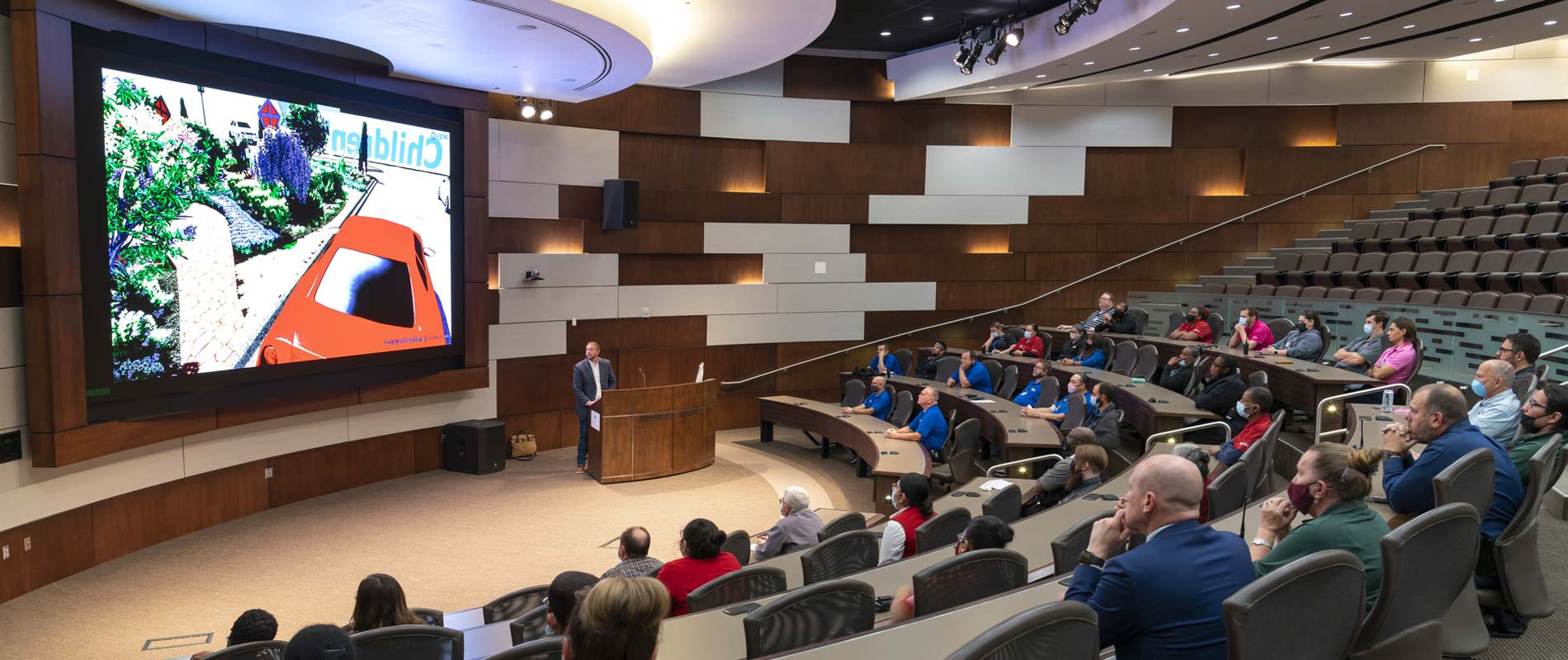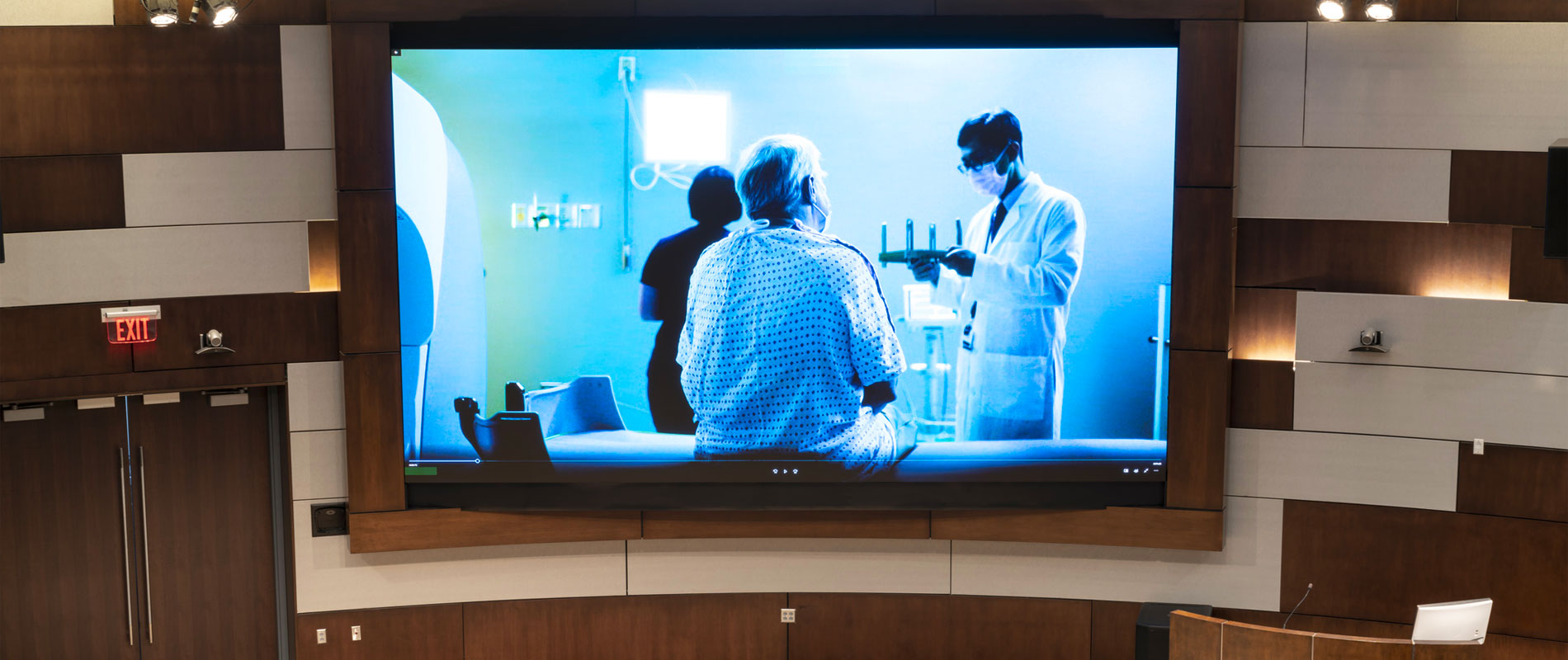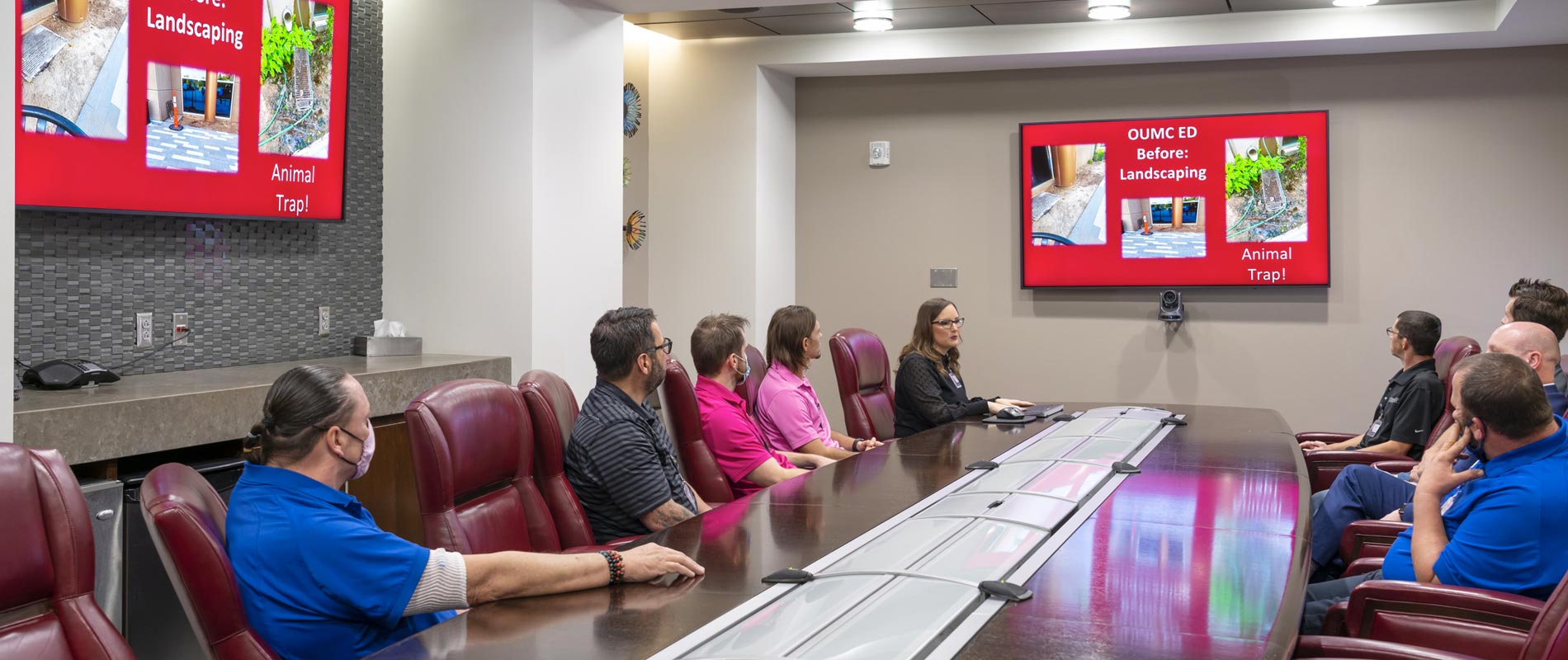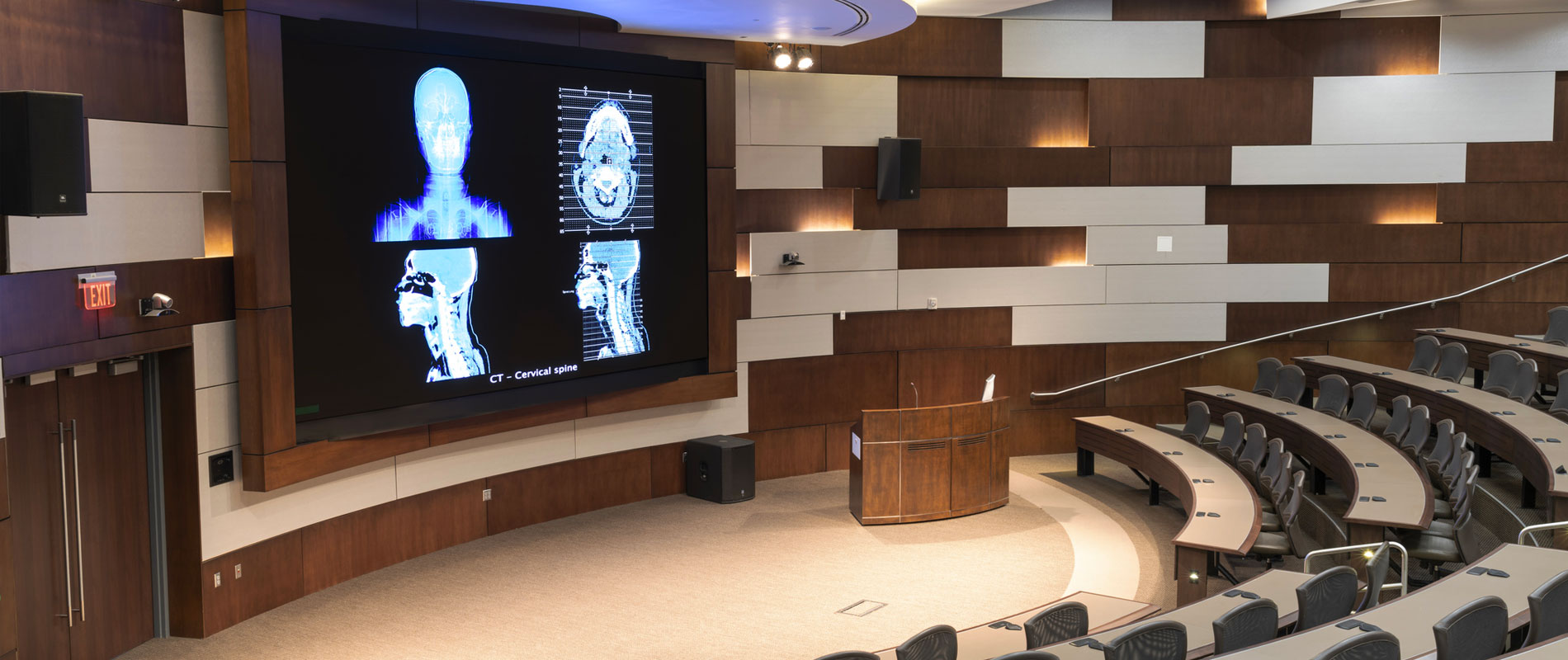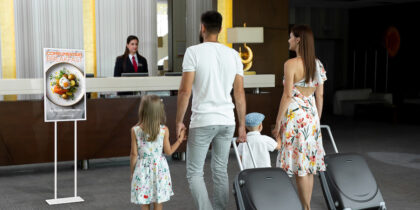
The Challenge
The Solution
UHAT selected Samsung’s Fine Pitch IE015R model, a 4K-enabled LED video wall, which delivers the clarity UHAT needed to broadcast high-resolution imagery at meetings, conferences, ceremonies and more. Samsung’s installation strategy ensured every element was in place and the system integrated with UHAT’s existing setup.
"We would have had to purchase the projector two or three times over to get the same longevity as the Samsung LED video wall."
— Charlie Ward, UHAT Director of Facility Solutions
The Results
UHAT was able to meet the immediate needs of the facility while future-proofing its video technology for years to come. Samsung’s LED video wall turned the Rainbolt Family Auditorium into a medical campus showpiece. And, it ensures UHAT can provide exceptional service for students, staff and visitors.

About UHAT and the Samis Education Center
The University Hospitals Authority and Trust (UHAT) was formed as part of a historic agreement that united the University of Oklahoma with both the state and a private corporation. UHAT devotes its resources to a variety of projects on campus. Its mission is to be a catalyst for medical excellence, to support medical education and research and to help ensure quality healthcare for all Oklahomans.
To that end, UHAT proudly provides support for important educational enhancements, for key research and healthcare advancements and for critical capital improvement projects on campus.
The 65,063-square-foot modern Samis Education Center was designed to support the educational needs of the Oklahoma Health Center. It boasts the latest technology and technical assistance before, during and after events. The four-story facility has a theater style auditorium that holds 278 people. It also includes two boardrooms and seven additional conference rooms.
The Challenge
Solving an urgent need while planning for the future
UHAT needed to replace the laser projection system in the Samis Education Center’s Rainbolt Family Auditorium — an event space central to the life of the medical campus. Medical residents use it daily for meetings, and graduates use it for white coat ceremonies. It’s also a popular venue for new employee orientations, continuing education programs and press conferences for the marketing department. The versatility of the space means it needs to accommodate a diverse range of visuals — everything from sophisticated drone footage to medical imagery. The old analog laser projector system was once adequate, but it was time to look into new technologies.
Charlie Ward, the director of facility solutions for UHAT, wanted to move away from bulbs because of how frequently they needed replacing — and because they would soon be obsolete. In the search for a new solution, longevity was critical.
“We needed a product that is not just current, but is setting us up for success in the future,” Ward says. “For example, most content still isn’t even being produced in 4K, but that is what we are looking to anticipate. Going forward, we wanted to have a 4K option.”
He was making the purchase with an eye toward 2031, but he faced a more urgent challenge: The current system had burned out — literally.
“The projector, which was housed in a wooden enclosure, caught fire and burned up all the wiring,” Ward says. They needed a replacement — fast.
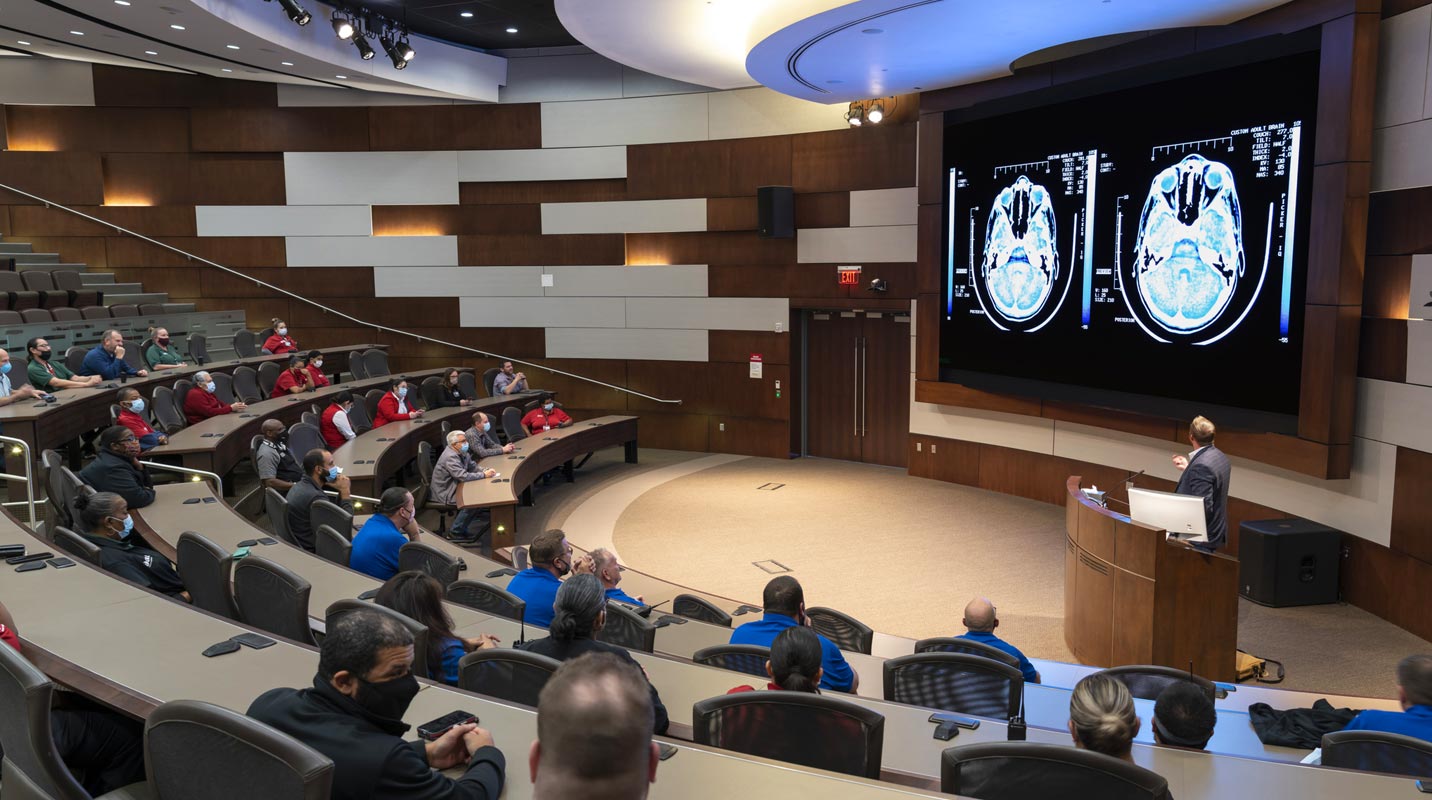
The Solution
Details make the difference
When looking at the technology available, Ward quickly gravitated toward LED displays, due to their ease of maintenance and long lifetime.
“It was just a no-brainer,” says Ward. “Why mess with having to replace this every three or four years when you could just have this product that’s going to be here for at least 10 years?”
Ward was familiar with Samsung’s display solutions; the Samis Education Center has QM series displays in its breakout conference rooms. So, while working with Greg Maniss at SKC Communications (the installation partner for the project), Ward looked again at Samsung’s solutions. Ward and Maniss decided to visit the company’s Executive Briefing Center (EBC) in Dallas, Texas, to see the technology in person.
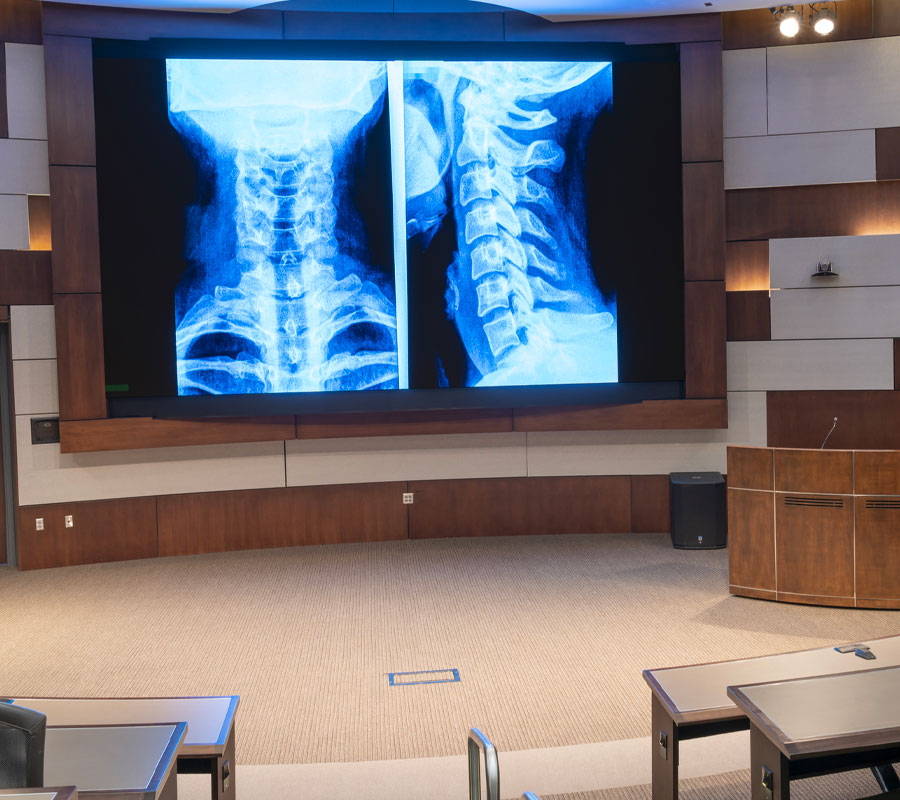
Originally, Ward was considering 2K technology and higher dots per inch (DPI). But once he arrived at the EBC, he knew he wanted something better.
UHAT selected Samsung’s Fine Pitch IE015R model, a 4K-enabled LED video wall. They ordered 36 cabinets at a 1.5-millimeter pixel pitch, together measuring 19 feet wide by 10.6 feet high. The display’s durable components and optimized power consumption deliver a reliable and efficient long-term solution. Temperature and ventilation controls also extend the display’s lifespan.
“We would have had to purchase the projector two or three times over to get the same longevity as the Samsung LED video wall,” Ward says.
It took about a month to reconfigure the space they’d used for the projector, but the actual installation of the LED display took only a week.
But Ward was impressed with more than the speed. During installation, Samsung and SKC identified and rectified tiny issues that, Ward says, no one else would have noticed. “They’d say, ‘See this pixel right here? It’s not the exact same color as the next pixel,’ and they’d fix it. That attention to detail, that ‘We want to make sure it is 100 percent right,’ is what I love to hear.”
Because Ward and Maniss ended up selecting a higher-end display than planned, they needed to know that the product would work with their current setup and fit their budget. It did both.
Ward says, “Samsung’s flexibility and willingness to work with us made a big difference.”
The Technology
IE015R
Samsung’s IER series LED displays combine leading video processing tools with specialized LED High Dynamic Range (HDR) technology to maximize brightness and refine the overall picture presentation. The result is stunning picture quality. The display offers ultimate flexibility in design thanks to customizable screen sizes and a cost-efficient price point.
QMR Series 65"
QMR Series displays deliver picture-perfect results and Intelligent UHD upscaling to enhance your standard and high definition content. The displays are fully compatible with Cisco WebEx® Room Kit products to provide the ultimate conferencing solution.
The Results
A campus showpiece serving the medical community and beyond
UHAT was able to meet the immediate needs of the auditorium while future-proofing its video technology for years to come.
Savannah Diaz, director of the Samis Family Education Center, says that adding the Samsung LED wall illustrates UHAT’s commitment to its state-of-the-art facilities. And it sends the right message to employees.
“We want to make sure our speakers here on this campus know that they are important and that their research is vital,” Diaz says. “Improving the technology in this way really speaks to that and lets them know they matter.”
The LED display communicates UHAT’s message to more than its current employees. Since the upgrade, the Rainbolt Family Auditorium has also become a recruiting tool.
“When the university or the hospital is recruiting a high-profile CEO or department head, Samis is one of the tour spots that they want to showcase and highlight to that individual,” explains Ward, “to show that we do have current technologies to be used for meetings and presentations.”
The LED display serves the entire campus medical community, which includes not only the college of medicine, clinics and hospitals, but also the colleges of allied health, dentistry and pharmacy.
Initial feedback on the technology has been positive, even though the space had limited use in its first year of operation due to the pandemic. Diaz and Ward look forward to the day when more people can attend events, meetings and conferences at the auditorium. The facility is, first and foremost, for the use of the medical campus, but it’s also made available to state agencies and even the legislature.
Providing this level of technology aligns with how Diaz and Ward see their role in serving the medical campus. They take pride in providing full concierge service. And now, they have the technology to support it. “You can literally walk in as a presenter and not have to worry about anything,” Ward says. “We’re ecstatic with how it has turned out.”
Diaz agrees: “We provide the royal treatment.”
